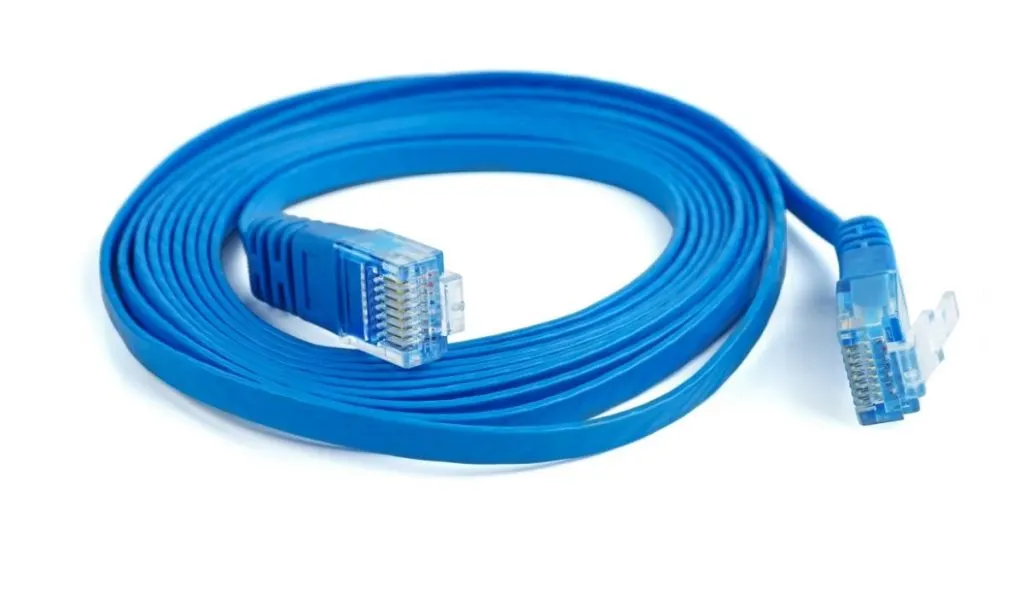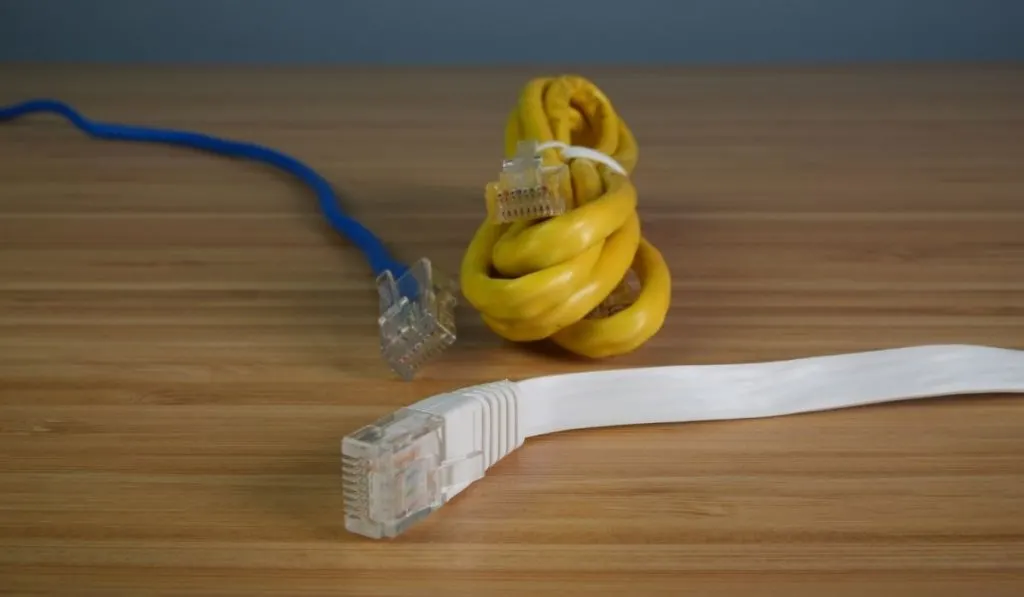Flat Ethernet cables are becoming more common, especially over short distances. It’s also great that they don’t carry a premium price tag, leaving the option largely up to personal preference. One advantage of flat ethernet cables is that you get a little more flexibility than traditional round cables. Sometimes you need to bend the cable to connect the device or avoid an obstacle, and many people wonder what happens if you do bend a flat ethernet cable? Will it break, or can you bend it too far?
You can bend a flat ethernet cable as long as the bend you’re making has a diameter smaller than an inch, roughly the size of a quarter. Bending either a flat or round cable any tighter often degrades the internal components. However, it is easier to bend a flat cable than a round one.
You can carefully bend your flat ethernet cable, but you don’t want to do it too tightly. The main reason you need to be careful when bending flat ethernet cables is that you can reduce their throughput and shorten the cable’s lifespan. So, while it is possible, you should think about the risk you’re taking and if it’s really worth it to get a much tighter bend. Usually, there are easy ways to hide that larger bend, even around corners, so there’s no real reason to risk it or push your cable beyond what it’s designed for
What are the Pros and Cons of Flat Ethernet Cables?

Flat Ethernet cables are great to have, especially when consistent electric power is important like we explained in our guide on PoE. The cables are also lighter in weight and more flexible, which comes from the lack of fillers and insulating tapes, but this also means less shielding. And Flat Ethernet cables are cost-competitive, and even sometimes prices lower, which is always nice.
Flat cables are also easier to manage for a couple of reasons, and some people prefer not to have thick, round cords in the way. It goes without saying that you do get a cleaner-looking setup with flat cables. However, while there are several great aspects, flat cables, like other technologies, also have a few downsides.
One big disadvantage of flat cables is that they’re not as durable as round ethernet cables. They’re also limited in length. As we discussed in our more extensive comparison article between flat and round cables, flat ethernet cables can have problems with speed and power flow over longer runs due to that lack of shielding, and you do have to be mindful when bending them to avoid making this tendency worse.
Bend Radius of a Cat 5/Ethernet Cable
Ethernet cable’s bend radius refers to how far you can bend the cable without affecting its performance or causing damage. When you’re bending a traditional round CAT cable, it’s the most common for the bend radius to be one inch which is roughly the size of a quarter. It doesn’t give you a lot of leeway, but going any tighter will weaken the cable, straining those internal components in a way that will lead them to fail sooner.
Put simply, when you’re bending a flat cat 5 ethernet cable, you want to pay attention to its radius. The flat surface is great when you’re laying the cable down, but it’s also easier to damage or weaken. The reason for this is that you’re missing some of the insulation and other materials that provide a little protection to the internal wires, compared to round cables which do have more protection.
How to Calculate the Bend Radius of a Cat 5/Ethernet Cable
Calculating the cable’s bend radius doesn’t even require pen and paper. It’s simply the outer diameter multiplied by four. It works out to be around an inch, it can be a millimeter more or less depending on the manufacturer. However, it’s not enough to make a difference. Keep your bend to an inch with a Cat 5 ethernet cable, and if you suspect your cable has something special or different going on, eyeball a diameter that is at least 4x the thickness of the cable itself.
How Far Can You Bend a Flat Ethernet Cable

It’s tempting to go past the one-inch bend limit, especially if the ethernet cable is going around a corner. It will look better laying flat against the wall, but this can put it over the bend limit. The performance will suffer, including speed. Using a 90-degree angle bend is the last thing you want to do. Having the ethernet cable well hidden isn’t going to do you much good if it doesn’t work and you have to replace it.
Along with performance issues, you’ll also spend more time and money on replacement cables if you’re overbending yours. Consider simply putting a small kink in the cable at the corner where you want it to turn. You’ll stay within the inch bend limit, and the rest of the cable will lie flat against the wall or floor. The slightly bent part is barely noticeable and if the cable color matches the wall or carpeting, it’s not visible unless you’re looking for it.
What Happens if You Bend the Ethernet Cable Too Far?
You do have some leeway with flat ethernet cables, usually about one inch. Due to the flat design, it’s easier to bend a flat cable than a round one, however, it doesn’t matter at the end of the day, because regardless of which type of ethernet cable you’re using, bending it too far will damage the wires. It won’t interrupt the electrical current, but speed and performance will degrade, especially over time.
There’s another problem that occurs with overbent ethernet cables: eventually, they break! While all cables need replacing after a few years, you’ll be doing it more often when it’s bent more than its bend radius. Not only do you have to buy another cable, but you also have to spend time reconnecting it. It’s a pain to replace your connections every few months or so; nobody wants to do that.
Conclusion
Wrapping things up, it is possible to bend your flat ethernet cable, but how far depends on the type, and whether you want to put your cables under stress in the first place. If you’re using a round Cat 5 cable, like this one (on Amazon), stay within one-inch. Anything larger or tighter will affect performance. You’ll also find that you’re replacing the cable more often.
Even if you want to go around a corner, don’t over-bend. As we touched on earlier in the article, there’s a handy little trick that works great instead. Use a small kink where you want it bent. It will stick up, but it’s better than ruining the ethernet cable.
